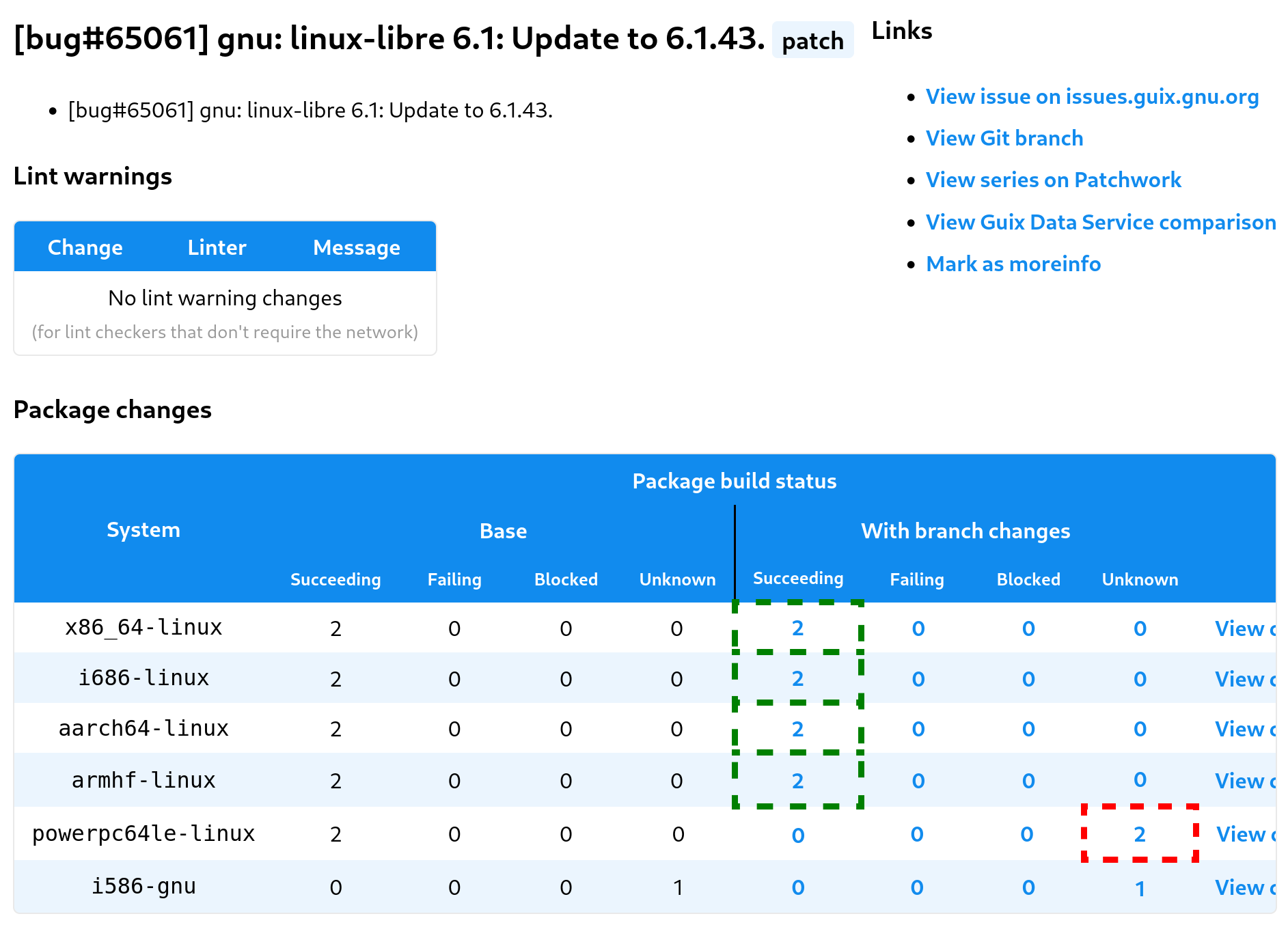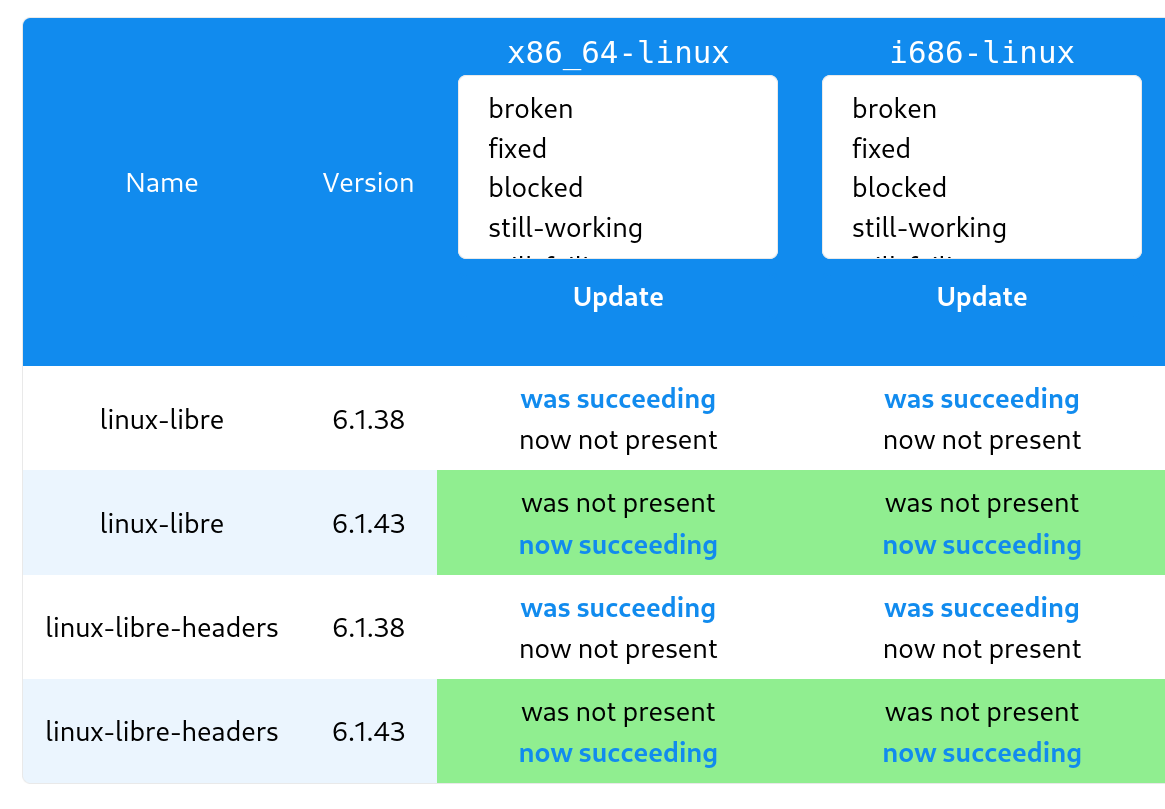A new Quality Assurance tool for Guix
Maintaining and expanding Guix's collection of packages can be complicated. As a distribution with around 22,000 packages, spanning across around 7 architectures and with support for cross-compilation, it's quite common for problems to occur when making changes.
Quality Assurance (QA) is a general term to describe the approach taken to try and ensure something meets expectations. When applied to software, the term testing is normally used. While Guix is software, and has tests, much more than those tests are needed to maintain Guix as a distribution.
So what might quality relate to in the context of Guix as a distribution? This will differ from person to person, but these are some common concerns:
- Packages successfully building (both now, and without any time bombs for the future)
- The packaged software functioning correctly
- Packages building on or for a specific architecture
- Packages building reproducibly
- Availability of translations for the package definitions
Tooling to help with Quality Assurance
There's a range of tools to help maintain Guix. The package linters are a set of simple tools, they cover basic things from the naming of packages to more complicated checkers that look for security issues for example.
The guix weather
tool looks at substitute availability information and can indicate how
many substitutes are available for the current Guix and system. The
guix challenge
tool is similar, but it highlights package reproducibility issues,
which is when the substitutes and local store items (if available)
differ.
For translations, Guix uses Weblate which can provide information on how many translations are available.
The QA front-page
Then there's the relatively new Quality Assurance (QA) front-page, the aim of which is to bring together some of the existing Quality Assurance related information, as well as new being a good place to do additional QA tasks.
The QA front-page started as a service to coordinate automated testing for patches. When a patch or patch series is submitted to guix-patches@gnu.org, it is automatically applied to create a branch; then once the information is available from the Data Service about this branch, the QA front-page web interface lets you view which packages were modified and submits builds for these changes to the Build Coordinator behind bordeaux.guix.gnu.org to provide build information about the modified packages.

A very similar process applies for branches other than the master branch, the QA front-page queries issues.guix.gnu.org to find out which branch is going to be merged next, then follows the same process for patches.
For both patches and branches the QA front-page displays information
about the effects of the changes. When this information is available,
it can assist with reviewing the changes and help get patches merged
quicker. This is a work in progress though, and there's much more that
the QA front-page should be able to do as providing clearer
descriptions of the changes or any other problems that should be
addressed.

How to get involved?
There's plenty of ways to get involved or contribute to the QA front-page.
If you submit patches to Guix, the QA front-page will attempt to apply the patches and show what's changed. You can click through from issues.guix.gnu.org to qa.guix.gnu.org via the QA badge by the status of the issue.
From the QA front-page, you can also view the list of branches which includes the requests for merging if they exist. Similar to the patch series, for the branch the QA front-page can display information about the package changes and substitute availability.
There's also plenty of ways to contribute to the QA front-page and
connected tools. You can find some ideas and information on how to
run the service in the README and if
you have any questions or patches, please email guix-devel@gnu.org.
Acknowledgments
Thanks to Simon Tournier and Ludovic Courtès for providing feedback on an earlier draft of this post.
About GNU Guix
GNU Guix is a transactional package manager and an advanced distribution of the GNU system that respects user freedom. Guix can be used on top of any system running the Hurd or the Linux kernel, or it can be used as a standalone operating system distribution for i686, x86_64, ARMv7, AArch64 and POWER9 machines.
In addition to standard package management features, Guix supports transactional upgrades and roll-backs, unprivileged package management, per-user profiles, and garbage collection. When used as a standalone GNU/Linux distribution, Guix offers a declarative, stateless approach to operating system configuration management. Guix is highly customizable and hackable through Guile programming interfaces and extensions to the Scheme language.
Om inte annat anges är blogginlägg på denna webbplats upphovsrättsskyddade av deras respektive författare och utgivna under villkoren hos licensen 1>CC-BY-SA 4.0</1> och licensen GNU Free Documentation License (version 1.3 eller senare, med inga invariant sections, inga front-cover texts, och inga back-cover texts).